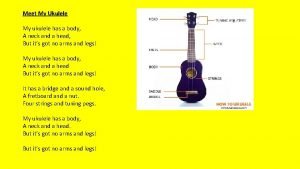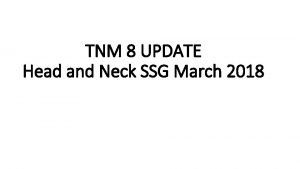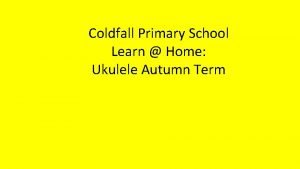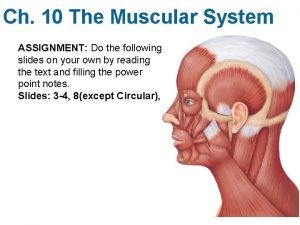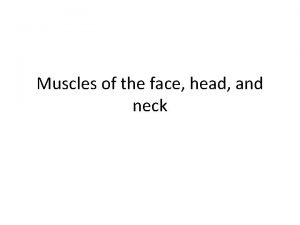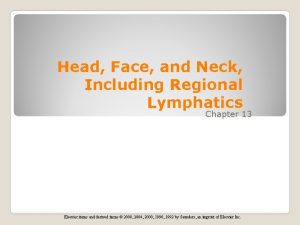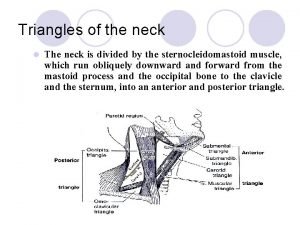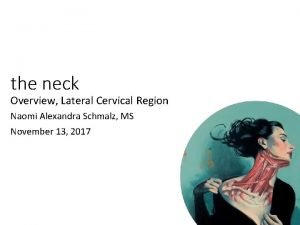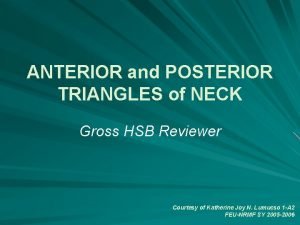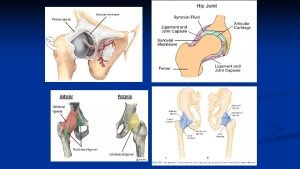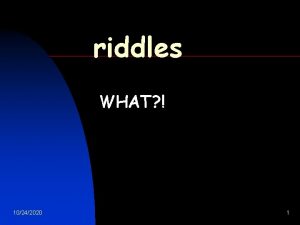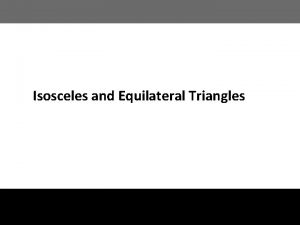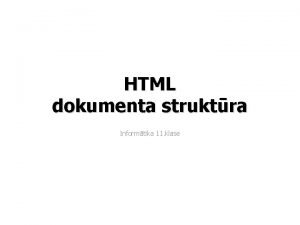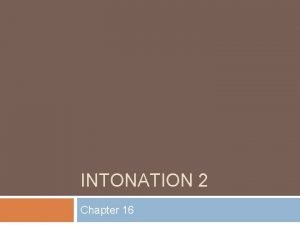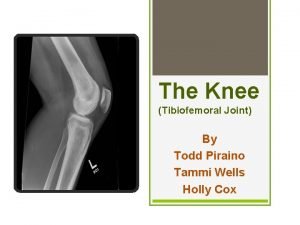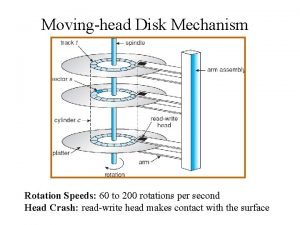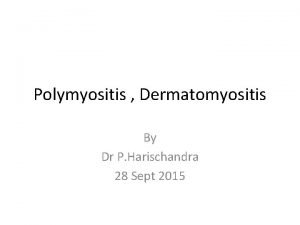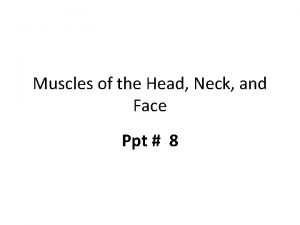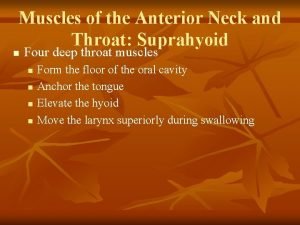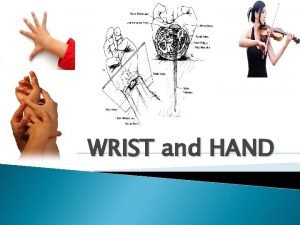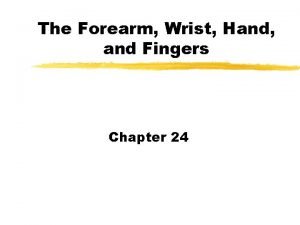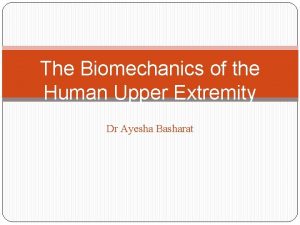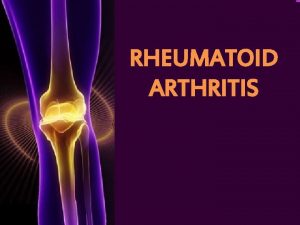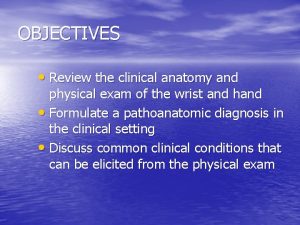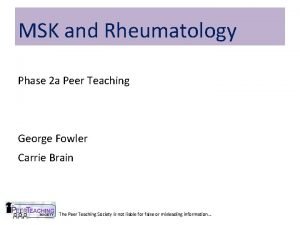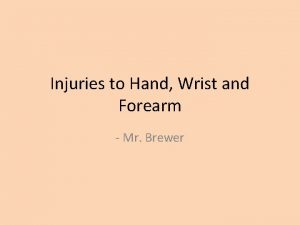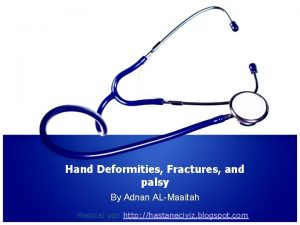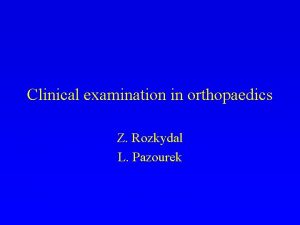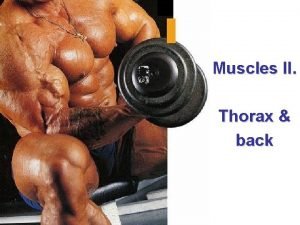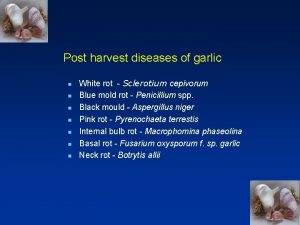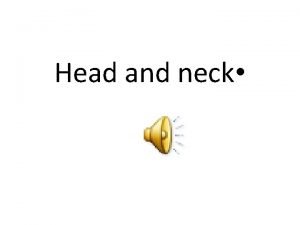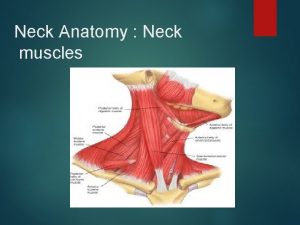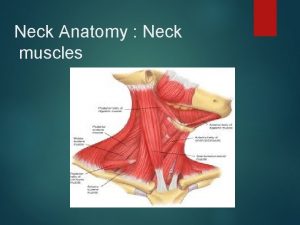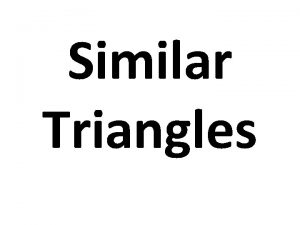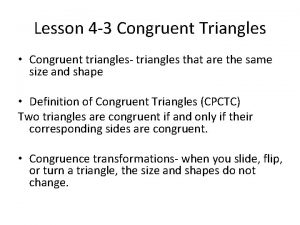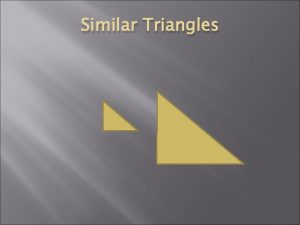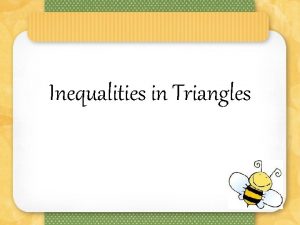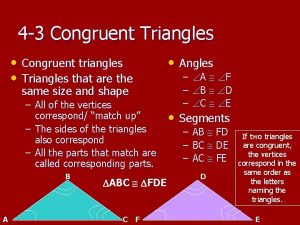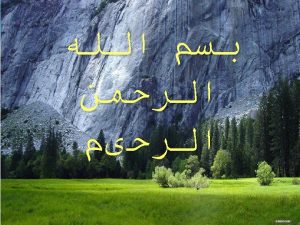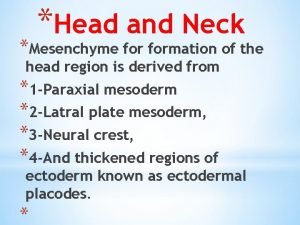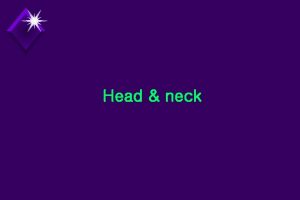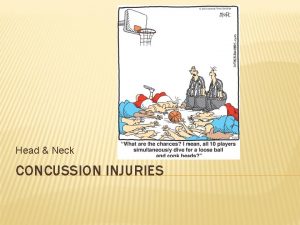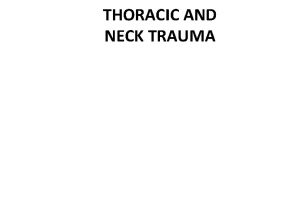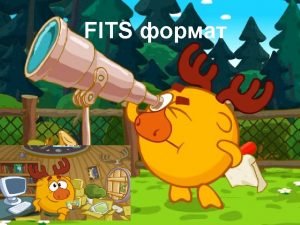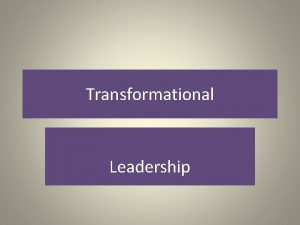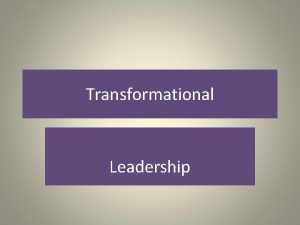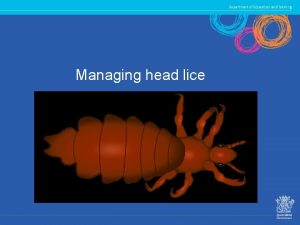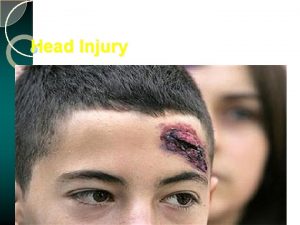The Head and Neck Triangles of the Neck



































































- Slides: 67

The Head and Neck

Triangles of the Neck l Neck subdivided into two triangles l Separated by the sternocleidomastoid muscle l Anterior triangle l Posterior triangle

Triangles of the Neck: Posterior l Boundries: ¡ ¡ ¡ l Anterior - sternocleidomastoid Posterior - trapezius Inferior – clavicle Contents: ¡ ¡ ¡ Nerves: accessory nerve, cranial plexus, phrenic nerve, brachial plexus Artery: Subclavian Vein: External jugular

Triangles of the Neck: Anterior l Boundries: ¡ ¡ ¡ l Anterior - midline Posterior - sternocleidomastoid Superior – inferior margin of the mandible Contents: ¡ ¡ ¡ Glands: Submandibular Muscles: Suprahyoid and infrahyoid muscles Artery: Carotid Vein: Internal jugular, External jugular Nerve: Acccessory

Triangles of the Neck









Lingvalni trokuti su: donji - trigonum linguale (Beclard) i gornji - trigonum linguale Pirogoff - dno oba trokuta je musculus hyoglossus; - granice gornjeg su: intermedijarna tetiva digastrikusa i cornu maius ossis hyoidei - granice donjeg su: intermedijarna tetiva digastrikusa i stražnji rub milohioidnog mišića - lateralno od m. hyoglossus i površno kroz oba trokuta prolazi n. XII s venom pratilicom - medijalno i ispod hyoglossus-a leži a. lingualis




Upper Respiratory Tract l l l Nasal Cavity Nostril Oral Cavity Larynx Pharynx


Nose Only portion of the RT that is externally visible l Functions: l ¡ ¡ ¡ l Provides airway for respiration Moistens and warms air Filters inhaled air Resonating chamber for speech Houses olfactory receptors 2 divisions: ¡ ¡ External nose Internal nasal cavity

Nasal Cavity l Air enters here during breathing ¡ Passes through the nares (nostrils) Divided into R and L by nasal septum l Continuous with the nasopharynx through the internal nares l

Nasal Cavity l Boundries: ¡ ¡ Roof – ethmoid bone (cribiform plate) Floor – maxilla (palatine process) palatine (horizontal plate) ¡ l Hard palate ¡ l Lateral walls – nasal bones, superior and middle nasal conchae (ethmoid bone), inferior nasal conchae, maxilla, palatine bone Palatine bones and maxillary bone Soft palate ¡ Muscular posterior portion


Nasal Cavity l Vestibule ¡ ¡ Superior to nostrils Skin lined with: l Sebaceous glands • • l Greasy secretion Collect dirt Lubricate Kill bacteria Sweat glands • Acidic • Slows growth of bacteria l Hair follicles • Trap small particles of dirt l Vibrissae ¡ ¡ Nose hairs Filter large particles (insects)

Lining of the Nasal Cavity l Olfactory Mucosa ¡ ¡ l Roof of nasal cavity Houses small receptors Respiratory Mucosa ¡ ¡ ¡ Pseudostratified ciliated columnar epithelium Goblet cells Lamina propria l ¡ ¡ Mucous and serous cells Venous plexus Function is to filter and warm inhaled air

Nasal Conchae l l Project medially from each lateral wall 3 structures: Superior ¡ Middle of ethmoid bone ¡ Inferior ¡ l Functions: Filters air ¡ Heats air ¡ Moistens air ¡ Reclaim heat and moisture during exhalation ¡

Paranasal Sinuses Air filled cavities that surround the nasal cavity l Lined by mucosa l Perform same function as nasal cavity and lightens skull l Located in Frontal, Ethmoid, Sphenoid, Maxilla bones l

Pharynx l l l Connects the nasal cavity and mouth to larynx and esophagus Extends from base of skull to level of C 6 vertebra Common passage for food and air (throat) Lined with skeletal muscle Divided into: ¡ ¡ ¡ Nasopharynx Oropharynx Laryngopharynx

Regions of the Pharynx Nasopharynx Oropharynx Laryngopharynx Pg 584

Nasopharynx l Location: ¡ ¡ ¡ Posterior to nasal cavity Inferior to sphenoid bone Superior to level of soft palate ONLY an air passageway l Closed off during swallowing by the soft palates’ uvula l ¡ Giggling! Ciliated pseudostratified epithelium l Contain: l ¡ ¡ Pharyngeal tonsils (adenoids) Tubal tonsils

Oropharynx l Location: ¡ ¡ Postreior to the oral cavity Extends inferiorly from level of the soft palate to level of the esophagus Swallowed food and inhaled air pass through here l Stratified squamous epithelium l Contain: l ¡ ¡ Palatine tonsils Lingual tonsils

Tonsils Lymphoid organ l Swellings of the mucosa lining the pharynx l Form ring around the entrance to the pharynx l 4 groups: l ¡ ¡ Palatine Lingual Pharyngeal Tubal Remove pathogens l MALT l

Laryngopharynx l Location: ¡ ¡ Lies posterior to larynx Continuous with the esophagus and larynx Common passageway for food and air l Stratified squamous epithelium l

Larynx l l l l “Voice box” Extends from C 4 to C 6 Attachments: ¡ Hyoid bone superiorly ¡ Continuous with trachea inferiorly Functions: ¡ Vocalization ¡ Provides open airway ¡ Switches to route air and food into proper channels Innervation: Vagus Superior part = stratified squamous epithelium Below vocal cords= ciliated pseudostratified columnar

Larynx l Composed of 9 cartilages connected by membranes and ligaments: ¡ ¡ ¡ 1 Thyroid 1 Cricoid 1 Epiglottis 2 Arytenoid 2 Corniculate 2 Cuneiform

Laryngeal Cartilages l Thyroid Cartilage ¡ ¡ Large Shield shaped Formed by 2 plates Composed of laryngeal prominence l Adam’s Apple!!

Laryngeal Cartilages l Cricoid ¡ ¡ ¡ Inferior to thyroid cartilage Forms a complete ring Perched on top of the trachea

Laryngeal Cartilages l Epiglottis ¡ ¡ ¡ Composed of elastic cartilage Covered by mucosa Projects upward from anterior wall of laryngeal inlet to level of base of tongue

Vocal Cords Located in the larynx l Mucosal folds formed by vocal ligaments l ¡ ¡ l Exhaled air passes over them and causes vibration ¡ ¡ l Composed of elastic fibers Run from arytenoid cartilages to the thyroid cartilages Force of air = volume Length & tension of folds = pitch False vocal cords ¡ Vestibular folds (superior to true)

Thyroid Gland l Location: ¡ ¡ l 2 lateral lobes ¡ l l In anterior neck On trachea, inferior to larynx Connected by the isthmus Butterfly shape Largest endocrine gland in body ¡ Produces TH l ¡ Increases metabolic rate Calcitonin l Depresses excess levels of Ca+ in blood

Thyroid Gland l Internally, composed of follicles ¡ Follicular cells l ¡ Parafollicular cells l l TH Calcitonin Blood supply ¡ Superior thyroid arteries l ¡ Branches of external carotids Inferior thyroid arteries l Branches of subclavians

Hyoid Bone l Location: ¡ ¡ l Inferior to mandible In anterior neck Associated with the skull ¡ Only bone in skeleton that does not articulate directly to another bone!!! Attaches via ligaments to temporal bone, larynx l Composed of: l ¡ ¡ l Body 2 pairs of horns Functions: ¡ ¡ Moveable base for tongue Points of attachment for larynx and neck muscles l Sternohyoid, thyrohyoid,

Mouth and Associated Organs Mouth l Tongue l Salivary glands l Teeth l

Mouth - Oral Cavity Food enters alimentary canal through here l Mucosa-lined l ¡ l Boundaries: ¡ ¡ ¡ l Thick stratified squamous epithelium, with keratinization in some areas Lips anteriorly Cheeks laterally Palate superiorly Tongue inferiorly Oropharynx posteriorly Mouth divided into 2 parts: ¡ ¡ Vestibule Oral cavity proper

Mouth l Lips (labia) and Cheeks ¡ ¡ Keep food inside mouth during chewing Composed of skeletal muscle surrounded by skin Lips formed by orbicularis oris muscle Cheeks; Muscles of Mastication (pg 266 -67) l l l Temporalis & Masseter (elevate mandible, close mouth) Buccinator (chewing) Digastric (lower mandible against resistance, opens mouth) Pterygoids (lateral movements) Palate: forms the roof of the mouth ¡ ¡ Soft palate (posterior) rises to close off nasopharynx during swallowing; made of muscle Hard palate (anterior) provides surface for tongue to force food against during chewing

Tongue l Functions ¡ ¡ ¡ l l l Grips and moves food between teeth during chewing Mixes food with saliva = BOLUS Moves bolus down pharynx Speech production Houses taste buds (= gustation) Creates floor of mouth Attachments: hyoid, mandible, styloid process, soft palate Made of Skeletal muscle with a CT septum ¡ ¡ Intrinsic muscles (change shape; rolling) Extrinsic muscles (movement; protrude, retract) Motor = Hypoglossal (CN XII) Sensory = Mandibular (CN V 3), Facial (CN VII), Glossopharyngeal (CN IX)

Swallowing Voluntarily initiated (pharynx) l Peristalsis = propulsion l ¡ ¡ Involuntary Alternate waves of contraction and relaxation of muscles in organ walls (e. g. esophagus) Squeezes food from one organ to next Some mixing

Salivary Glands Compound tubuloalveolar glands l Intrinsic salivary glands l ¡ ¡ l In mucosa of tongue, palate, lips and cheeks Keeps mouth moist at all times Extrinsic salivary glands ¡ ¡ Lie external to mouth Connected by ducts Secrete only during eating or prior to (“mouth watering”) 3 paired glands: l l l Parotid Submandibular sublingual

Salivary Glands l Produce saliva ¡ ¡ ¡ ¡ Mixture of water, ions, mucus and enzymes Moistens mouth Dissolves food for taste Binds food into a bolus Enzymes digest starch Bicarbonate buffer neutralizes acids Kill microorganisms Contains proteins to promote growth of beneficial bacteria

Teeth – From Eruption to Edentate l Teeth lie in sockets (alveoli) in gumcovered margins in mandible and maxilla l Have 2 sets of teeth (dentitions) ¡ Primary dentition / deciduous (milk) teeth ¡ Permanent dentition (21 years; 32 teeth) Incisors (8): rip, cut l Canines (4): tear and pierce l Premolars (8): grinding l Molars (12): grinding l

Teeth l Function: ¡ l Ingestion and mechanical breakdown of food Periodontal ligaments (collagen fibers) anchor tooth in bony socket ¡ ¡ Gomphosis - form of immovable articulation; a peglike part fits into a cavity Continous with gingiva (gum)

Teeth l Regions: ¡ Crown l l ¡ ¡ Neck (gumline) Root l l Covered with enamel Area above gingiva Area below neck in alveolus Pulp cavity ¡ ¡ ¡ Center of tooth Loose CT with vessels and nerves Supplies nutrients to hard tissues

Teeth l Root Canal ¡ l Apical foramen ¡ l Opening into the root canal at the tip of each root Blood supply ¡ l Portion of the pulp cavity in the root Superior/Inferior Alveolar artery, branches of External Carotid artery Innervation ¡ ¡ Maxilla = Superior Alveolar Nerves Mandible = Inferior Alveolar Nerves

Teeth Substances l Enamel ¡ ¡ l Dentin ¡ ¡ ¡ l Made of calcium salts Avascular, acellular Not renewed or replaced HARDEST substance in body!!!! Underlines enamel Forms bulk of tooth Made of minerals and collagen Maintained during life Harder than bone Cementum ¡ ¡ Calcified external surface Attaches tooth to periodontal ligament

Teeth at Birth Number of erupted teeth = 0 l Jaws covered by gingiva (gums) l ¡ Lots of drooling!!!

First Teeth – 6 Months l Lower central incisors first to appear ¡ ¡ 8 Incisors = 6 -10 months 4 Canines = 16 -20 months 4 1 st Molars = 12 -16 months 4 2 nd Molars = 20 -24 months 20 deciduous teeth emerge by age 2 l Dental formula l ¡ Deciduous teeth dental formula: Describes the number and position of classes of teeth (half of the mouth) 2 I, 1 C, 2 M X 2 = 20 ****No premolars!

Adolescence – Adult l Permanent teeth enlarge and develop ¡ ¡ Roots of deciduous teeth reabsorbed Teeth loosen and fall out Begin to erupt from 7 -13 years of age Third molars (wisdom teeth) emerge from 17 -25 years l ¡ May be absent!! Adult dental formula: 2 I, 1 C, 2 P, 3 M X 2 = 32

Tooth Troubles l Cavities (caries) ¡ ¡ ¡ Demineralization of enamel by bacteria In severe cases, erodes the dentin of tooth Most severe cases erosion penetrates pulp cavity

Tooth Troubles l Gingivitis ¡ ¡ l Inflammation of the gingiva caused by plaque accumulation Leads to……. Periodontitis ¡ ¡ Infection of periodontal ligament leading to its destruction along with the bone around the teeth Leads to……………








 There once was a man from tennessee ukulele
There once was a man from tennessee ukulele Tnm 8 head and neck
Tnm 8 head and neck Risk factors of head and neck cancer
Risk factors of head and neck cancer This is home ukulele
This is home ukulele Muscular system head and neck
Muscular system head and neck Platysma muscle
Platysma muscle Regional write up head face and neck
Regional write up head face and neck Omoclavicular triangle
Omoclavicular triangle Nerve point of neck
Nerve point of neck Triangles of neck
Triangles of neck Head neck ratio
Head neck ratio What has a neck but no head
What has a neck but no head Isosceles triangle algebra
Isosceles triangle algebra 40:1 dividing head chart
40:1 dividing head chart Flooded suction vs suction lift
Flooded suction vs suction lift The attacking firm goes head-to-head with its competitor.
The attacking firm goes head-to-head with its competitor. Tagi html
Tagi html Operation of moving head disk storage
Operation of moving head disk storage Body parts
Body parts Pre-head head tonic syllable tail
Pre-head head tonic syllable tail Innervation of biceps femoris short head
Innervation of biceps femoris short head Pre-head head tonic syllable tail
Pre-head head tonic syllable tail Moving head disk mechanism
Moving head disk mechanism Rash on upper chest and back
Rash on upper chest and back Face detection ppt
Face detection ppt Muscles of the anterior neck and throat
Muscles of the anterior neck and throat Poem about tinikling
Poem about tinikling Benediction hand vs claw hand
Benediction hand vs claw hand Chapter 24 the forearm wrist hand and fingers
Chapter 24 the forearm wrist hand and fingers Halstead ligament
Halstead ligament Boutonniere and swan neck deformity
Boutonniere and swan neck deformity Eular criteria
Eular criteria Dorsum of hand
Dorsum of hand Spondyloarthropathy
Spondyloarthropathy Dorsiflexion of wrist
Dorsiflexion of wrist Waiter's tip deformity
Waiter's tip deformity Objective examination of patient
Objective examination of patient Lumbar triangles
Lumbar triangles Causal organism of neck and bulb rot in garlic is _____
Causal organism of neck and bulb rot in garlic is _____ Hình ảnh bộ gõ cơ thể búng tay
Hình ảnh bộ gõ cơ thể búng tay Slidetodoc
Slidetodoc Bổ thể
Bổ thể Tỉ lệ cơ thể trẻ em
Tỉ lệ cơ thể trẻ em Chó sói
Chó sói Glasgow thang điểm
Glasgow thang điểm Alleluia hat len nguoi oi
Alleluia hat len nguoi oi Môn thể thao bắt đầu bằng chữ f
Môn thể thao bắt đầu bằng chữ f Thế nào là hệ số cao nhất
Thế nào là hệ số cao nhất Các châu lục và đại dương trên thế giới
Các châu lục và đại dương trên thế giới Công thức tính thế năng
Công thức tính thế năng Trời xanh đây là của chúng ta thể thơ
Trời xanh đây là của chúng ta thể thơ Mật thư anh em như thể tay chân
Mật thư anh em như thể tay chân Phép trừ bù
Phép trừ bù độ dài liên kết
độ dài liên kết Các châu lục và đại dương trên thế giới
Các châu lục và đại dương trên thế giới Thể thơ truyền thống
Thể thơ truyền thống Quá trình desamine hóa có thể tạo ra
Quá trình desamine hóa có thể tạo ra Một số thể thơ truyền thống
Một số thể thơ truyền thống Cái miệng nó xinh thế
Cái miệng nó xinh thế Vẽ hình chiếu vuông góc của vật thể sau
Vẽ hình chiếu vuông góc của vật thể sau Nguyên nhân của sự mỏi cơ sinh 8
Nguyên nhân của sự mỏi cơ sinh 8 đặc điểm cơ thể của người tối cổ
đặc điểm cơ thể của người tối cổ Giọng cùng tên là
Giọng cùng tên là Vẽ hình chiếu đứng bằng cạnh của vật thể
Vẽ hình chiếu đứng bằng cạnh của vật thể Fecboak
Fecboak Thẻ vin
Thẻ vin đại từ thay thế
đại từ thay thế điện thế nghỉ
điện thế nghỉ
